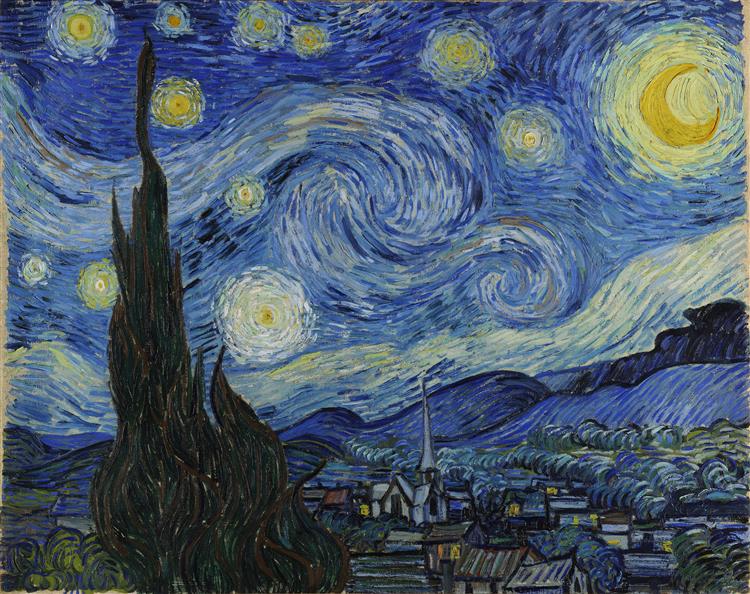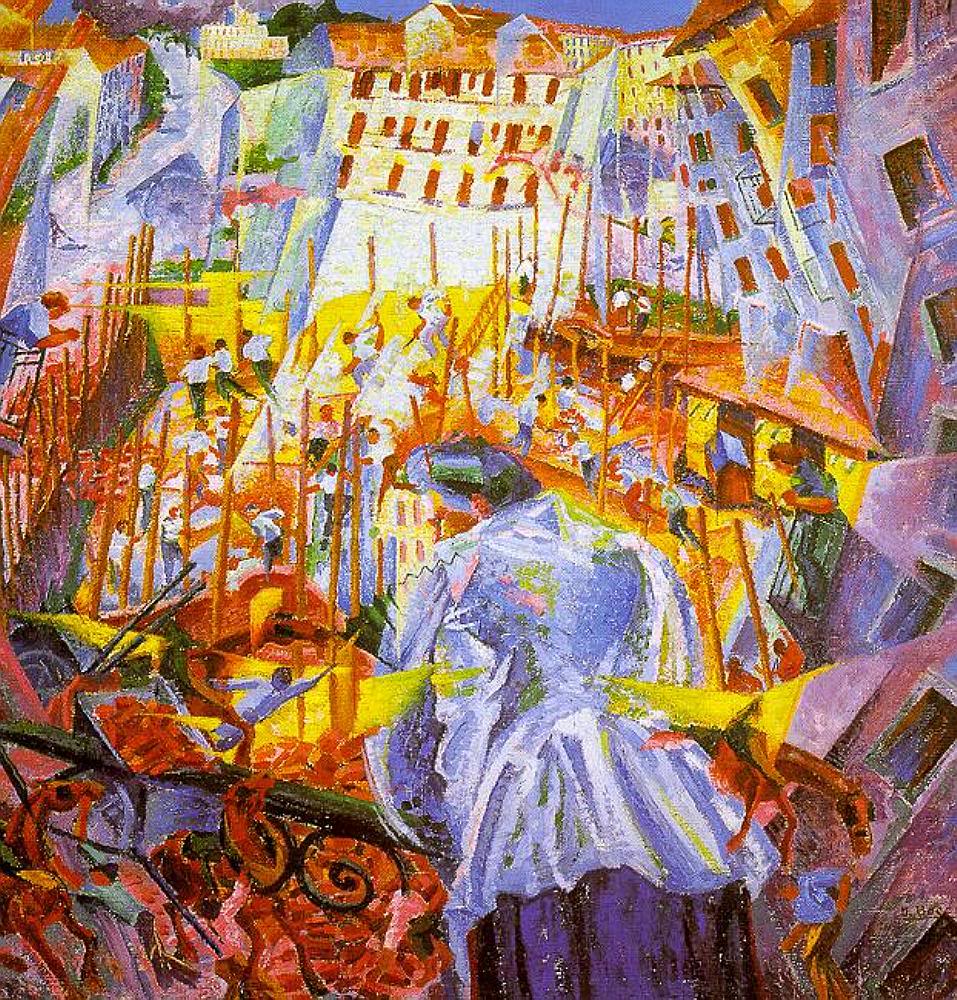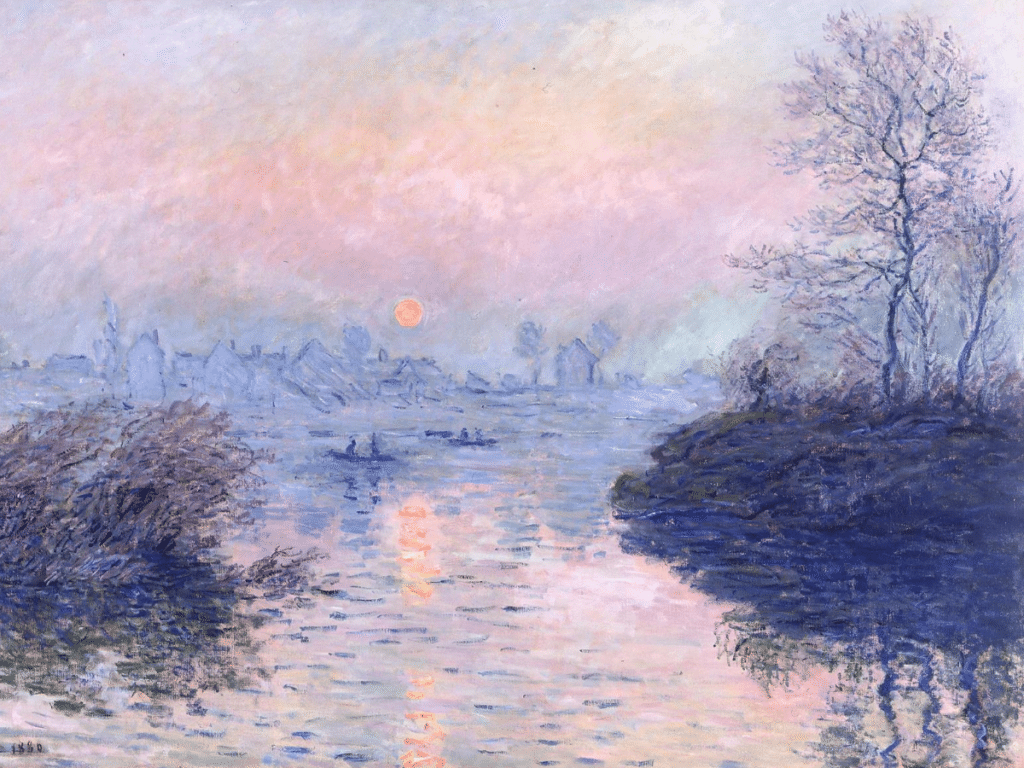Harmony in art refers to the use of colours, shapes, and other elements to create a pleasing or balanced effect. It’s a purposeful arrangement of elements that results in a cohesive composition, where different design elements complement one another and appear to work together.
In this guide, we’ll discuss what harmony is, how it can be achieved, and provide some visual examples for reference.
Disclaimer: Fine Art Tutorials is a reader supported site. When you make purchases through links on this site, we may earn a small commission at no extra cost to you.
Definition of harmony in art
Harmony in art refers to a well-balanced arrangement of elements that creates an aesthetically pleasing composition. The harmony of a piece relies on the balance between the different visual elements, such as colour, line and shape.
An artist may intentionally plan a composition so that elements relate to and complement one another. For example the artist may select a colour scheme, where certain colours are repeated throughout the composition. Then, contrasting colours can be used harmoniously to enhance the appearance of the other colours.
Harmony relates to there being a lack of variety in the amount of different elements with lots of different characteristics, which are tied together in a chaotic and almost unintentional way.
Examples of harmony in art

Complementary colours have strong contrast, but they can still be used harmoniously. For example, in the painting ‘The Starry Night’ by van Gogh, the limited colour palette and the consistency of the use of the complementary colours of purple and yellow throughout the composition make it appear harmonious. The same bright yellow tone is repeated throughout the painting to represent illuminated stars and brightly lit windows in buildings. There are so many other elements in this painting that work harmoniously, that help tie the contrasting colours together. For example, the repetition of textured lines, which create swirling patterns, the simplified shapes and the colours which represent night time create consistency within the piece.

Another example of an artist who carefully planned their compositions to create beautifully harmonious artworks was Claude Monet. Monet used tactics like planning colour schemes, using a limited palette, simplifying elements, using repetition, using similar brush work techniques and texture throughout a piece. In the painting ‘Woman with Parasol’, harmony is achieved through the use of texture and brushwork. The long organic strokes which emulate the sensation of wind in the clouds are reflected in the fabric of the woman’s dress, which creates a sense of harmony and cohesion between the landscape and the figures.
Certain artists have mastered this form of expression to balance the energetic aspects of their work. One great example is British sculptor Henry Moore. Moore was known for his abstract large-scale sculptures composed of natural shapes with large open curves as outlines. The repetition of curves in the forms of the sculpture creates harmony. He demonstrates that a successful fusion between visionary ideas coupled with structural harmony help craft emotionally captivating artwork.
How harmony relates to the elements of art
The elements of art include: colour, texture, shape, line, form, space and value. Artists can use any of these elements to create harmony in artwork. For example, a variety of colours can be combined to create a unified composition if muted tones are used consistently throughout. Using shapes that have similar lines, forms and contours can create a sense of harmony in an image. Alternately, contrast can be employed through the use of complementary colours or shapes that stand out from one another.
Harmony is the pleasing effect created through a successful organisation or combination of the elements of art. When used harmoniously, these visual elements can create a feeling of equilibrium and balance which is pleasing to the eye. Although harmony does not necessarily imply sameness or repetition, it can be achieved through the use of repetition or by juxtaposing opposing elements together in thoughtful ways. By carefully considering how to unite all underlying elements in works of art, artists can create visually pleasing compositions that evoke a sense of harmony for their viewers.
Colour, value and harmony

To create harmony with colour and values, use a limited range of colours or values, or limited amounts of contrast between different colours and values. Paintings with a limited palette of colours will appear harmonious, as will paintings with high key value range. By the artist limiting variables by painting with only light tones, this will add a sense of unity and simplicity to the painting.
Monet used mainly midtones, without any bright highlights or dark shadows in this haystack painting. The limited range of values brings harmony to the piece.
Line, form, shape and harmony

The use of lines, forms and shapes can create harmony in artwork by repeating certain elements. Gustav Klimt uses patterns of geometric shapes on the dress in ‘The Kiss’. These shapes complement one another, however they contrast with the organic shapes of the fabric and figures. However, the elements harmonise with one another due to the limited range of colours and due to them being unified in Klimt’s painting style.
Texture and harmony

Brushwork, mark making, and three dimensional elements creates texture in an image. Van Gogh is a great example of an artist who used brush strokes and texture to create harmony and variety. His brush work is emblematic of his style. In his painting ‘The Mulberry Tree’, he used thick, texture paint throughout the whole image and short, defined brush strokes, that hold there texture on the canvas. These loose brushstrokes unify disparate elements in an image, creating harmony.
Principles of art: Harmony
Harmony is one of the principles in art. The principles in art are the fundamental building blocks of composition. Each principle describes how artists arrange visual elements in an artwork, and harmony is no exception.
The other principles of art include: balance, perspective, emphasis, contrast, variety, unity, movement, rhythm, scale and proportion.
The principles in art are all closely intertwined. Here you can find definitions of the other design principles and how they relate to harmony.
Balance and harmony
Balance is an important principle for creating visual harmony in artwork as it ensures a sense of equilibrium across the composition. A balanced composition can be achieved through use of line, shape and colour. Balance specifically refers to how the visual weight of different elements are distributed within the artwork. For example, highly saturated colours have more visual weight than muted colours. So if you were to place an element that was highly saturated on one side of the canvas, you could balance this by placing an element with a similar level of saturation on the other side. Equally, a large shape will attract the viewer’s attention and therefore has more visual weight than a small shape.

A symmetrical composition may contain elements of equal size and colour throughout. This would provide an even visual balance across the piece. Alternatively, an asymmetrical composition could also be balanced if different elements of dissimilar sizes and colours were arranged in such a way that they appeared to have the same level of importance. For instance, a symmetrical composition would balance a large shape on one side of the canvas with a large shape on the other side of the canvas. Whereas, in an asymmetrical composition may balance the large shape with a cluster of small shapes, a complex shape, or a small shape that has a highly saturated colour.
Balance creates harmony, but the two principles are different in that balance refers to how the placement of elements around a canvas or within an artwork feel equally weighted, and harmony refers to how elements emphasise the qualities of one another.
Unity and harmony
Harmony and unity are similar but distinct concepts. Unity refers to the relationship between elements in an artwork and how they work together as a whole. All of the individual components should come together to create a unified composition that has a sense of visual flow.

Unity can be achieved through consistent use of colour, texture, shape and line throughout an artwork. For example, if all of the colours used in an artwork were muted tones, this would create a unified composition. For example, Pissarro used mostly warm tones to unify different subjects and objects in this painting.
Harmony, on the other hand, is achieved when elements within an artwork complement one another and strengthen each other’s impact. Harmony can be created through the use of similar colours or shapes, but it can also be achieved through contrast. For instance, an artwork with a predominance of muted tones could be balanced by incorporating one bold and bright colour in strategic places throughout the piece.
Variety and harmony
Harmony and variety can be seen as somewhat opposite to each other. Variety provides visual interest by introducing elements with different characteristics, for example colours with different hues. Variety can be harmonious, if there is a sense of progression, or relationship between different elements.
Contrast and harmony
Contrast is when two or more elements that are dissimilar to one another are used in an artwork to make the other elements stand out. For example, colours that are on opposite sides of the colour wheel are the most dissimilar. These are called complementary colours and include the pairs of orange and blue, purple and yellow, red and green. When contrasting elements relate to one another, they can appear harmonious. Harmony can also be found in contrast if there are a limited number of contrasting elements within the image.
Contrast can be unharmonious
Contrast can also be unharmonious, however, if the element is completely out of kilter. Going back to the example of ‘The Starry Night’, the texture, tones and shapes appear unified and harmonious. However, there are ways that the painting could appear inharmonious if van Gogh had made different decisions about what to include in the painting. For example, if he used too many different combinations of complementary colours, that would mean that there would be too much variety in the colours and too many different elements trying to grab the viewer’s attention.

Many famous artists use contrast with the intent to create a piece that appears unharmonious in certain respects. The result is a work that appears visually arresting and jarring, that catches the attention. The bright colours and jagged lines of Umberto Boccioni’s artwork create a sense of clashing dynamism and contrast. However, by using only saturated colours, there is no visual rest for the viewer. This creates a fast tempo in the artwork. Artists from the futurist movement, such as Boccioni rejected the ideas of using neutral or muted colours, realistic styles, mundanity and orderliness. As you can see, an artist’s aim isn’t always to create the most harmonious work possible.
Describe how to create harmony in your own artwork
Step 1: Select a colour palette. Choose colours that will work together and create an aesthetically pleasing combination.
Step 2: Consider the balance between elements in your artwork. To achieve harmony, you can use elements such as shape, size, line, texture or colour to draw the eye around your artwork.
Step 3: Create visual rhythm and repetition. Consider repeating elements in your composition such as colour, shape or line, this will help to create a sense of harmony.
Step 4: Use contrast to create unity. Contrast helps to bring together different design elements, creating a cohesive composition. Try to relate the contrasting element to another element in some way. This will create cohesion and will prevent the element from looking out of place.
Step 5: Plan the composition before you start. Think of theme and message and how you can use visual elements to relate to it. By planning the composition first, you can make a conscious effort to unify different elements.
Why is harmony in art important?
Harmony in art is important because it helps to create a sense of visual flow. It also serves as a way of balancing out all of the elements within an artwork, creating a unified composition that works as a whole. By considering how all of the elements in an artwork work together, artists can create pieces that appear aesthetically pleasing and harmonious to the viewer.

